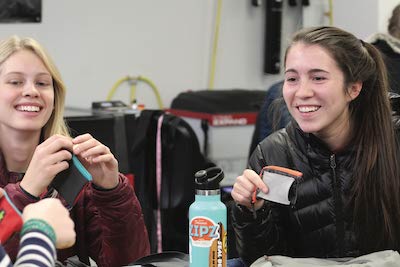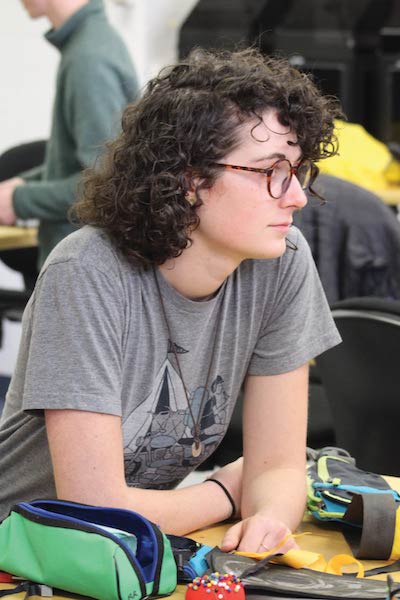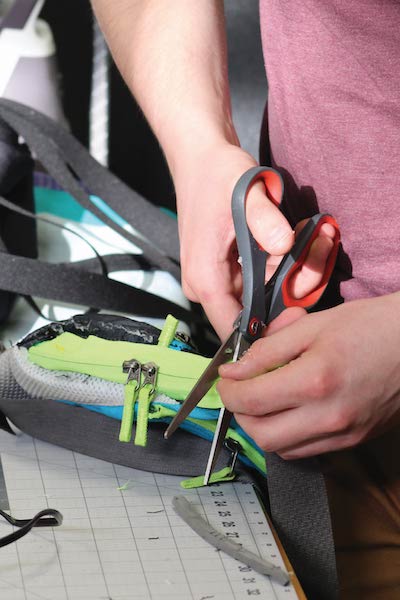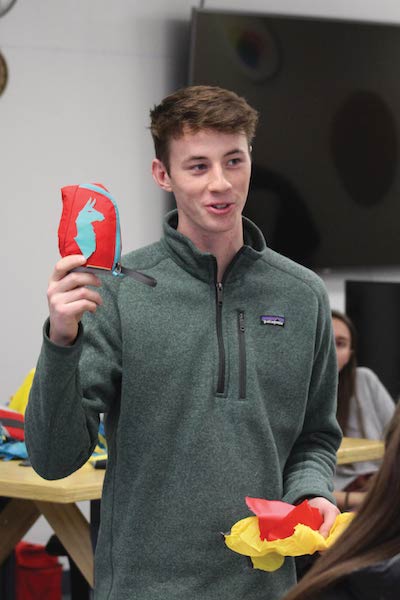
While designers are traditionally recognized as being the creators of innovative, quality products, Cori Williams, a senior product developer at Cotopaxi, visited the Utah State University campus to teach Outdoor Product Design and Development students about the importance of product developers to bring good product designs to market. Williams also led students in a design challenge where they were tasked with upcycling old, or otherwise unsellable items, into new product.
Williams made it clear throughout her presentation that great product only comes to market when design, development (including factory partners), and product line management come together to accomplish a task. Development is responsible for understanding and communicating product details including changes to samples and prototypes regarding materials, color, costing, and trims.
While some developers may have a reputation of saying “no” regarding product changes, developers are responsible for understanding the capacity and capabilities of factory partners, communicating those changes, and empowering design teams to understand the possibilities when it comes creating products. Developers have the opportunity to show design teams what is actually possible for companies to create due to their close connection and interaction with factories.
Development doesn't own the design, but they help bring it to life.
Developers also operate in a world juggling multiple timelines for at least three different seasons of products. Timelines become very important and developers find themselves reverse engineering how long factories and suppliers will take to assemble a product in order to build out a product calendar that helps design, product line management, and product development accomplish their goals.
Designers may get a lot of credit for new product creation, but with anything in an organization, great product is only created through collaboration between design and product development.
After Williams presentation, she led a select number of students in a design sprint to identify how to upcycle damaged Cotopaxi product into new items. Students split up into teams and deconstructed otherwise unusable bags in order to create wallets, fanny packs, new backpacks, and more! Students demonstrated their ability to generate new concepts, work within constraints, and find sustainable solutions to product waste that exists in the industry.
Industry collaborations made possible through the Manufacturing and Outdoor Products Support Hub, a partnership between Utah Manufacturing Extension Service and Outdoor Product Design & Development.




